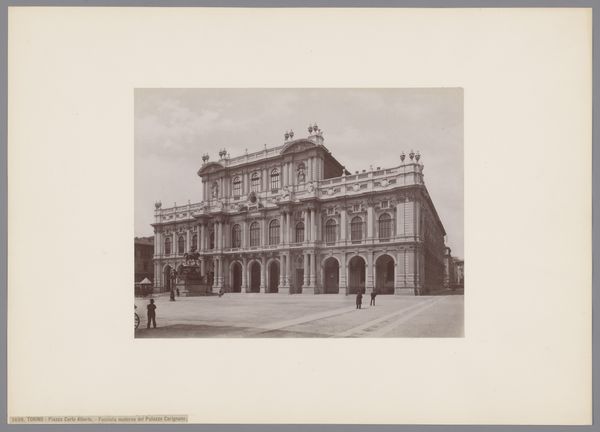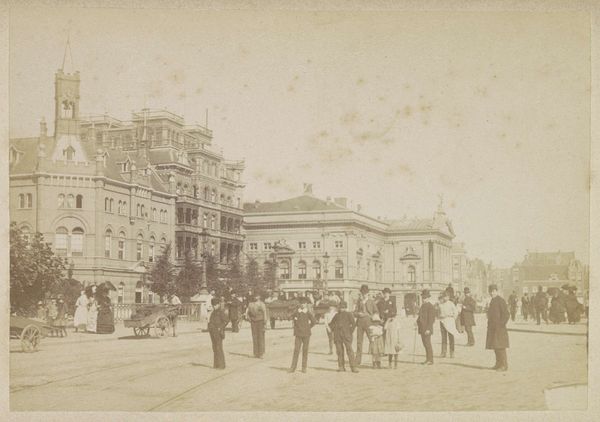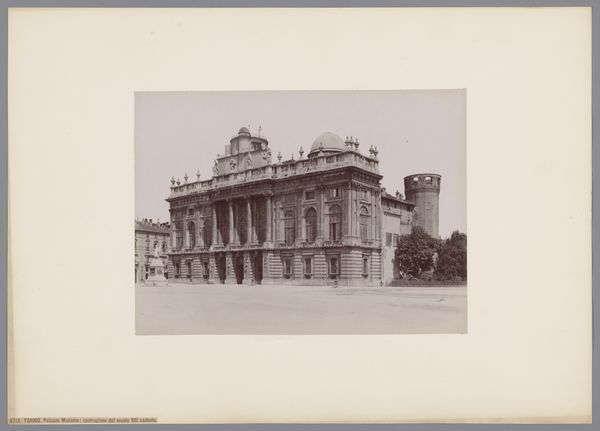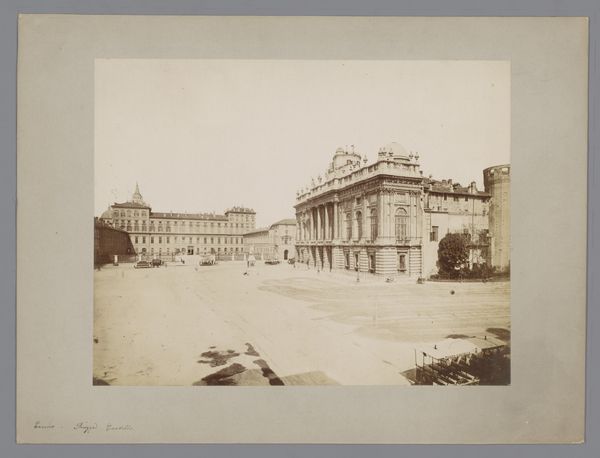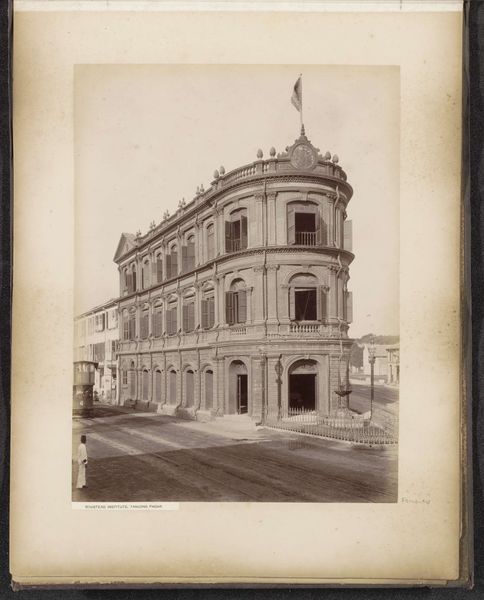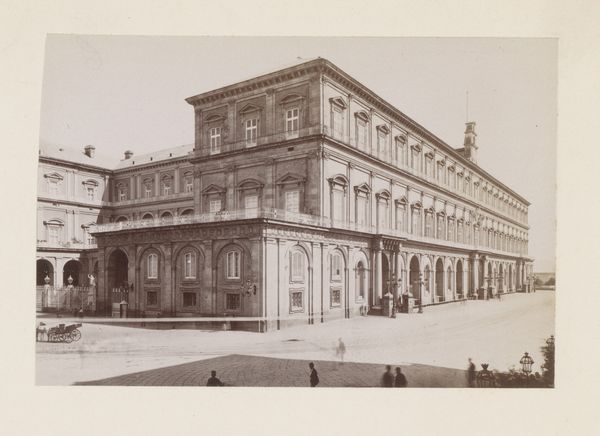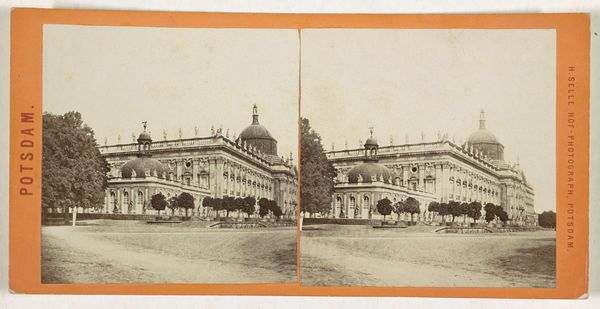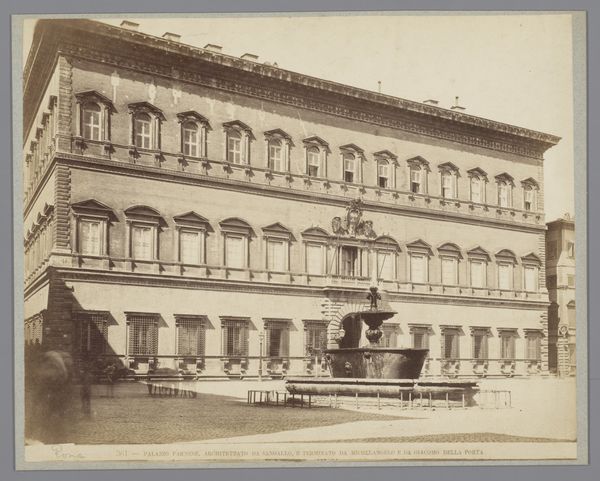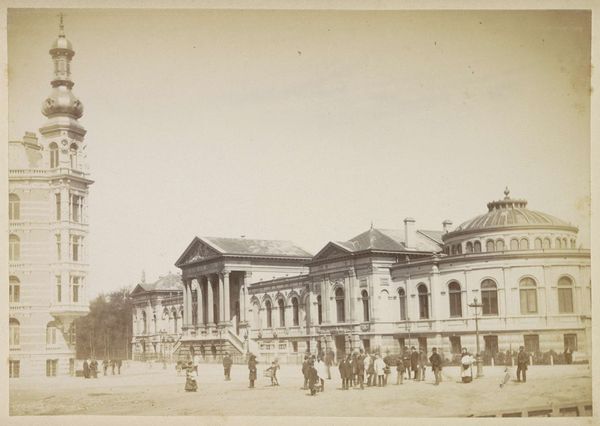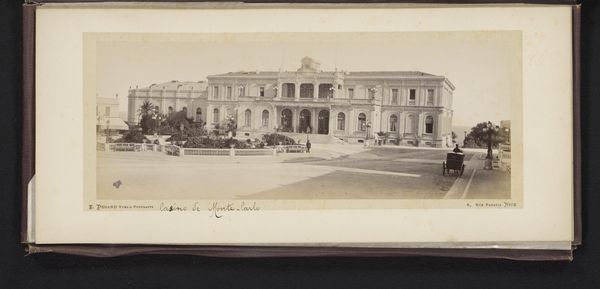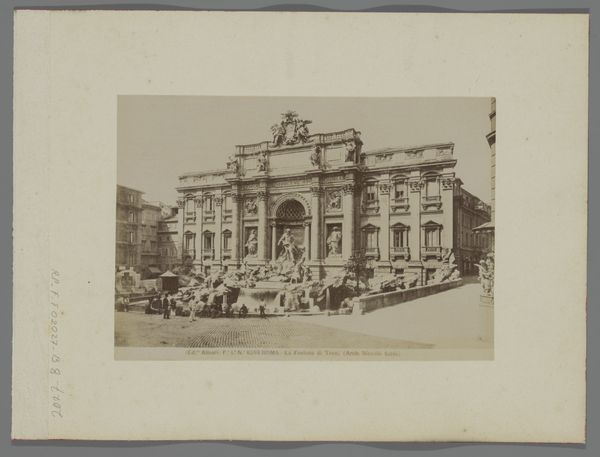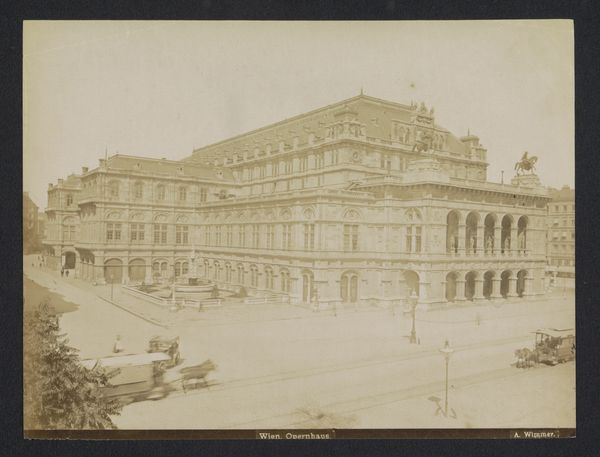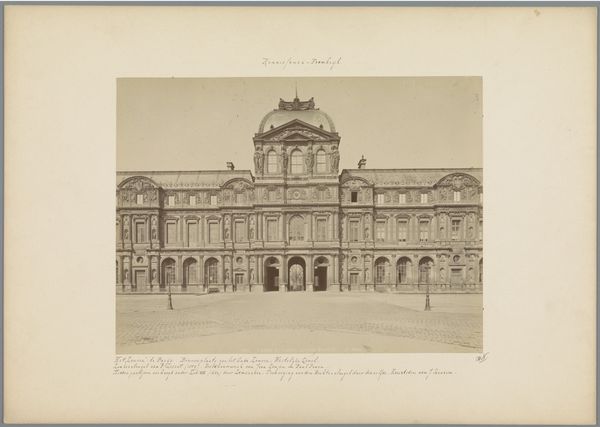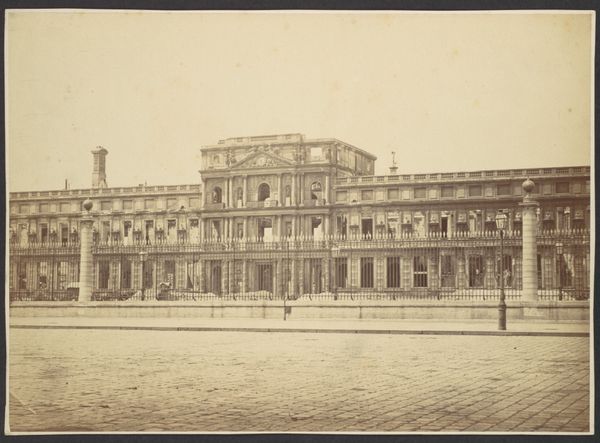
print, photography, albumen-print
# print
#
photography
#
cityscape
#
watercolor
#
albumen-print
#
realism
Dimensions: height 169 mm, width 222 mm
Copyright: Rijks Museum: Open Domain
Curator: The albumen print before us, dating circa 1890, captures the Stadhuis of Seville, or Seville City Hall, as seen through the lens of Emilio Beauchy. There's a formality and a deliberate stillness to it. What strikes you initially? Editor: A feeling of weighty opulence. The photograph’s monochromatic palette lends a certain gravitas, almost as if this were a portrait of power itself, rather than just a building. The rows of carriages suggest a stage for societal spectacle, not simply transportation. Curator: Absolutely. Beauchy was working during a time when photography was becoming increasingly accessible, yet his choice of subject matter speaks to existing power structures within Seville. The City Hall, then and now, is a symbol of governance and authority. The line of waiting carriages signals wealth and status— who had access and who didn't? How was power visually reinforced? Editor: And consider the baroque details, repeated and amplified across the façade. Each window framed, each level meticulously ornamented; it speaks to a desire to impress, to project strength through visual overload. I’m particularly drawn to the shadows within the carriage, are they hiding a symbol, or figures of some importance in Spanish society during this time? Curator: The shadowing introduces elements of contrast and ambiguity that is worth noticing, though the limitations of the medium also are quite evident. The albumen process rendered incredibly sharp details but sometimes at the expense of tonal range. We lose details in the shadow, as you observe. Perhaps we're meant to. Editor: Perhaps the power is deliberately obfuscated. We are given the shell of authority without the specifics. Beauchy, in documenting it, perhaps unknowingly captures the paradox of governance: present and visible, yet somehow always distant and unknowable to the masses. But what is most lasting in this image is not the architecture but these coaches frozen like sculptures – ready to ride toward somewhere else! Curator: A pertinent point, indeed. It reminds us to question not only what is depicted but also what is subtly concealed, or what is just out of focus to further contextualize artwork and our position in relation to it. Editor: The very act of observation reveals our own relationship with these symbols of power, now framed within history, yet somehow echoing in the present. The horses of those carriages pull a throughline, they move from then toward now.
Comments
No comments
Be the first to comment and join the conversation on the ultimate creative platform.
